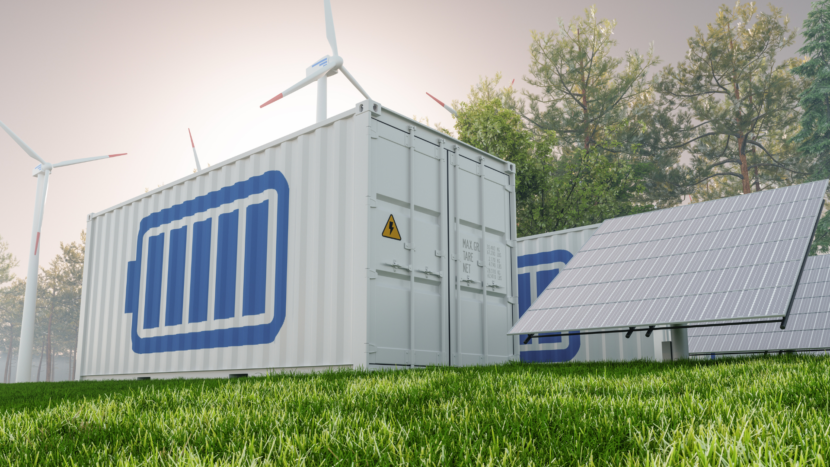𝗛𝗼𝘄 𝘁𝗼 𝗰𝗮𝗹𝗰𝘂𝗹𝗮𝘁𝗲 𝘁𝗵𝗲 𝗿𝗲𝗾𝘂𝗶𝗿𝗲𝗱 𝗰𝗮𝗽𝗮𝗰𝗶𝘁𝘆 𝗼𝗳 𝗲𝗻𝗲𝗿𝗴𝘆 𝘀𝘁𝗼𝗿𝗮𝗴𝗲?
- 12 października, 2023
𝗛𝗼𝘄 𝘁𝗼 𝗰𝗮𝗹𝗰𝘂𝗹𝗮𝘁𝗲 𝘁𝗵𝗲 𝗿𝗲𝗾𝘂𝗶𝗿𝗲𝗱 𝗰𝗮𝗽𝗮𝗰𝗶𝘁𝘆 𝗼𝗳 𝗲𝗻𝗲𝗿𝗴𝘆 𝘀𝘁𝗼𝗿𝗮𝗴𝗲?
Energy storage plays an important role in the process of energy transition ![]()
![]() , due to their application, the level of independence from the distribution system operator increases. Proportionally to the development of storage system technologies
, due to their application, the level of independence from the distribution system operator increases. Proportionally to the development of storage system technologies ![]()
![]() , the variety of offered systems and the level of complexity of applied solutions are growing
, the variety of offered systems and the level of complexity of applied solutions are growing ![]() . Optimizing a solution tailored to the individual needs and preferences of end users can be challenging
. Optimizing a solution tailored to the individual needs and preferences of end users can be challenging ![]() . This article provides practical tips and suggestions to help you make the right choice
. This article provides practical tips and suggestions to help you make the right choice ![]() .
.
𝗖𝗮𝗽𝗮𝗰𝗶𝘁𝘆 𝗮𝗻𝗱 𝗽𝗼𝘄𝗲𝗿 
Battery capacity is defined as the ability of a cell to store and return an electrical charge 
 . It is expressed in watt-hours [Wh]
. It is expressed in watt-hours [Wh]  . The value of capacity depends on the operating environment and the voltage at the battery terminals
. The value of capacity depends on the operating environment and the voltage at the battery terminals 
 . Using the concept of capacity, it is possible to determine the length of time a battery can supply an electrical circuit with a specific current
. Using the concept of capacity, it is possible to determine the length of time a battery can supply an electrical circuit with a specific current  .
.
Power, expressed in kilowatts [kW]  , is the amount of current a battery can deliver or draw at one time
, is the amount of current a battery can deliver or draw at one time 
 . Having the information on Voltage [V] and cell capacity [Ah] following the multiplication of the two values, we can determine the power that the battery will deliver to the device in a certain unit of time
. Having the information on Voltage [V] and cell capacity [Ah] following the multiplication of the two values, we can determine the power that the battery will deliver to the device in a certain unit of time 
 .
.
𝗛𝗼𝘄 𝘁𝗼 𝗱𝗲𝘁𝗲𝗿𝗺𝗶𝗻𝗲 𝘁𝗵𝗲 𝗿𝗶𝗴𝗵𝘁 𝗰𝗮𝗽𝗮𝗰𝗶𝘁𝘆 𝗮𝗻𝗱 𝗽𝗼𝘄𝗲𝗿? 
To determine the right capacity and power of an energy storage system, we need to match the solution to the customer’s needs and preferences 
 . Here are some questions to consider:
. Here are some questions to consider:
How much energy does the customer currently consume, and what is the capacity of the electrical equipment to be powered by the energy storage? 

How does the end customer currently manage its electricity, what is its self-consumption coefficient? 

It is also necessary to take into consideration the customer’s future plans, such as the installation of electric car charging stations 
 , heat pumps
, heat pumps 
 , air conditioners
, air conditioners 
 , and other energy-saving solutions
, and other energy-saving solutions 
 . Also, of course, an important aspect in the overall calculation is the alignment of the energy storage installation with the existing or planned photovoltaic installation
. Also, of course, an important aspect in the overall calculation is the alignment of the energy storage installation with the existing or planned photovoltaic installation 
 .
.
𝗖𝗮𝗹𝗰𝘂𝗹𝗮𝘁𝗶𝗼𝗻 𝗼𝗳 𝗲𝗻𝗲𝗿𝗴𝘆 𝘀𝘁𝗼𝗿𝗮𝗴𝗲 𝗰𝗮𝗽𝗮𝗰𝗶𝘁𝘆 
After obtaining answers to the above questions, you can proceed to calculate the appropriate energy storage capacity 
 . It is assumed that 1 to 1.5 kWh for each kilowatt peak power of the photovoltaic installation (kWp) can be taken as a starting value for calculating the capacity
. It is assumed that 1 to 1.5 kWh for each kilowatt peak power of the photovoltaic installation (kWp) can be taken as a starting value for calculating the capacity 
 . This means that for a 6 kWp photovoltaic installation, the recommended energy storage capacity is 6 to 9 kWh
. This means that for a 6 kWp photovoltaic installation, the recommended energy storage capacity is 6 to 9 kWh 
 . Of course, it all depends on the demand and use of energy at particular times of the day
. Of course, it all depends on the demand and use of energy at particular times of the day  .
.


Add Comment